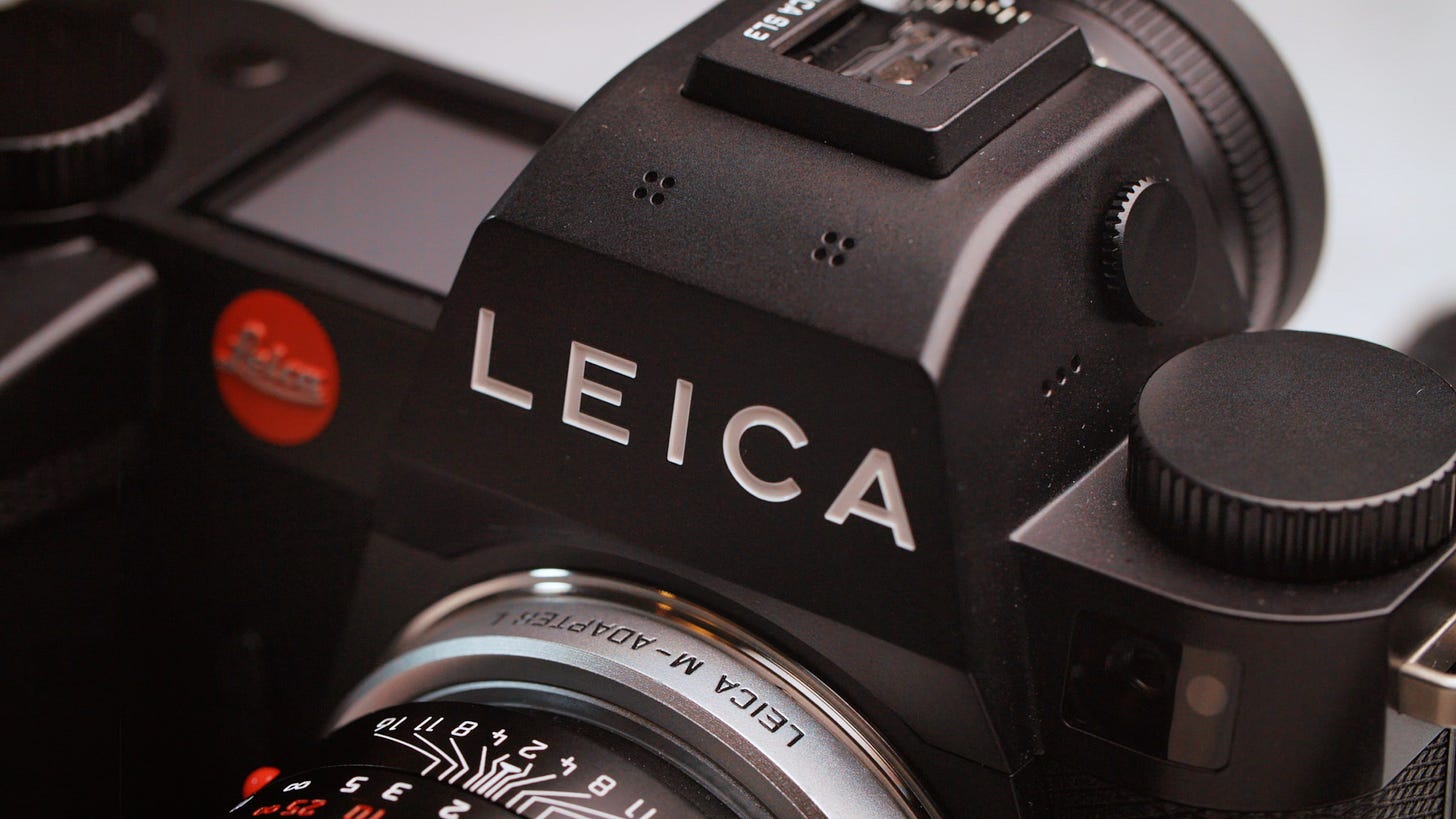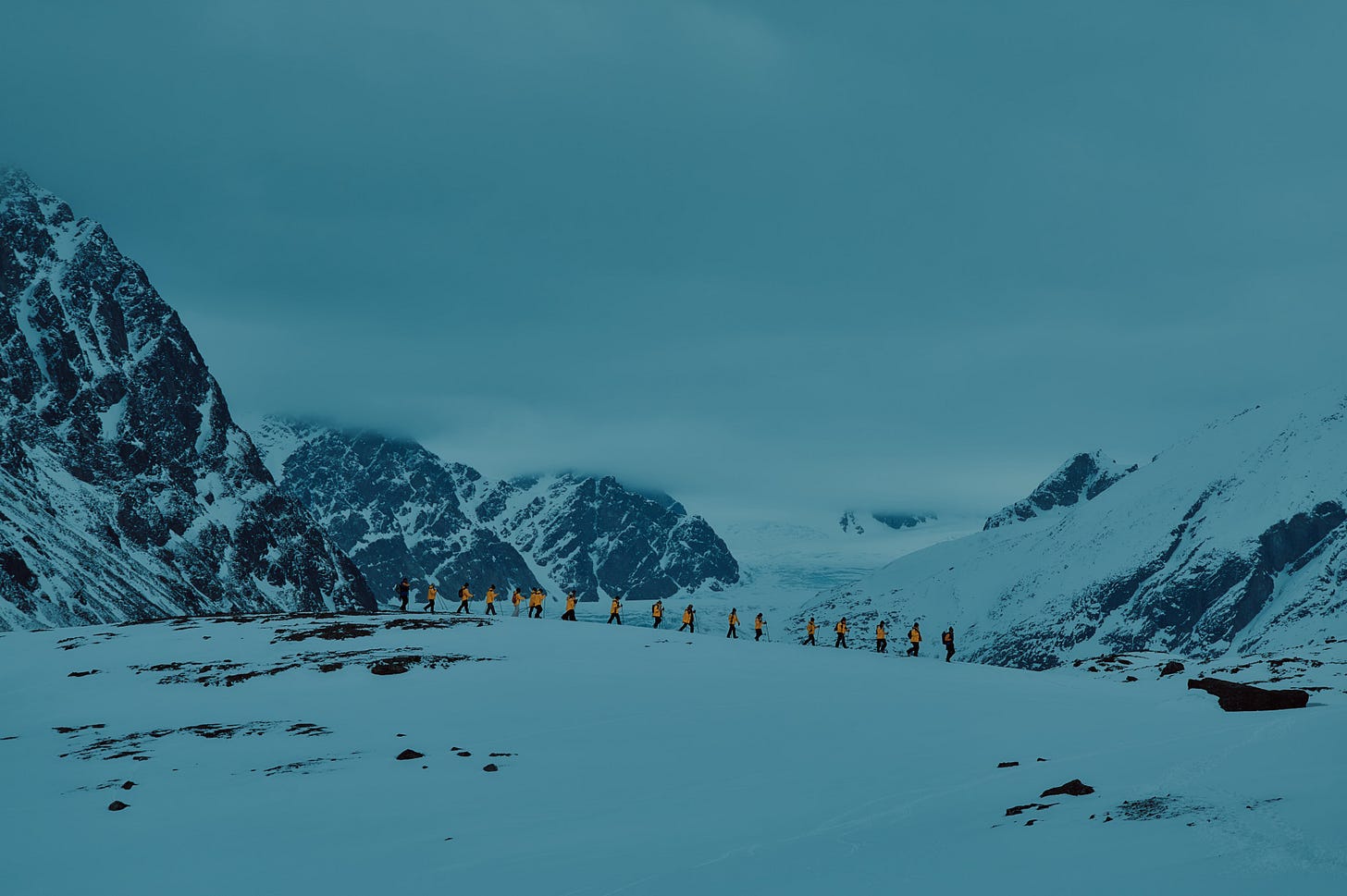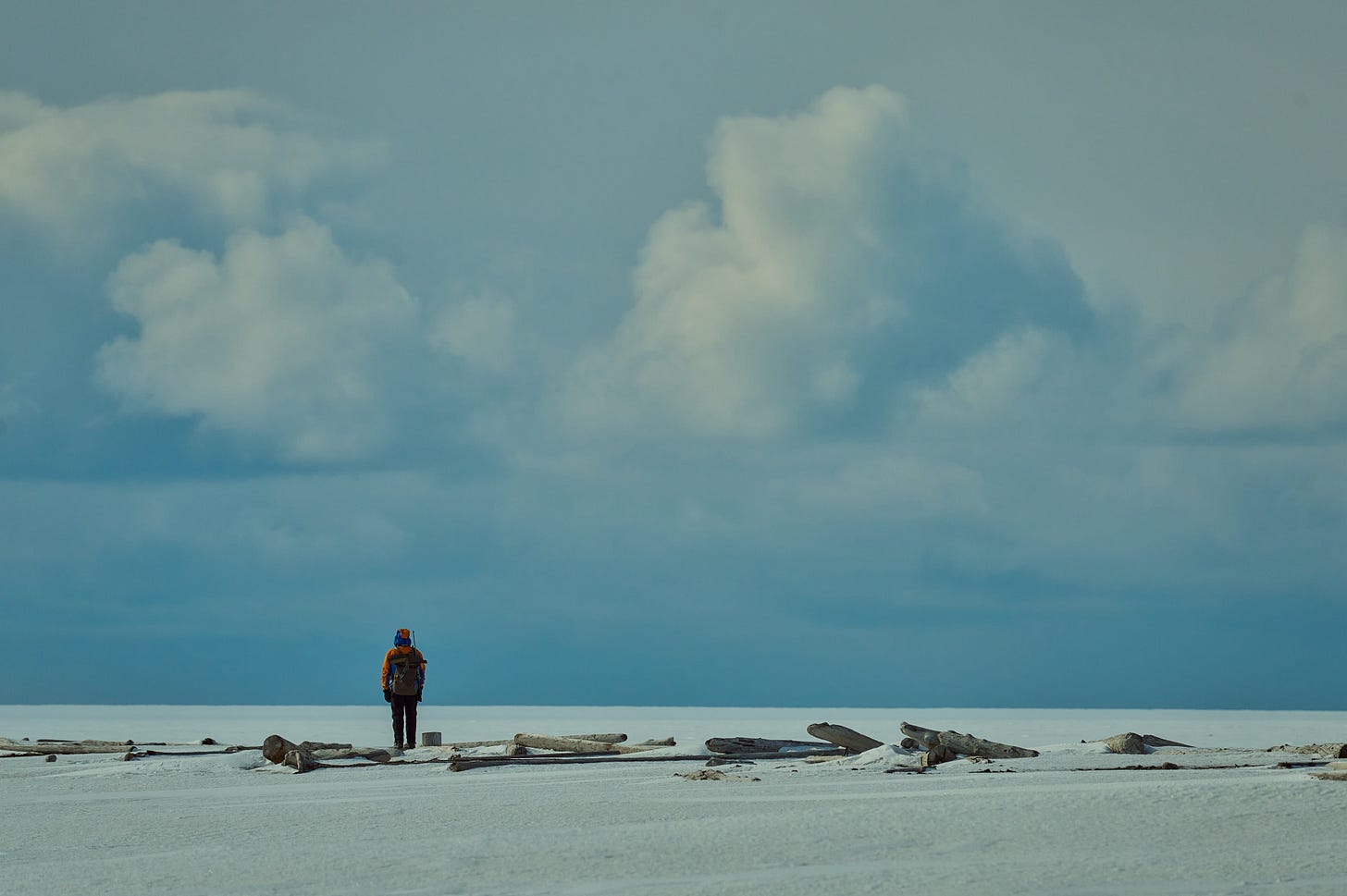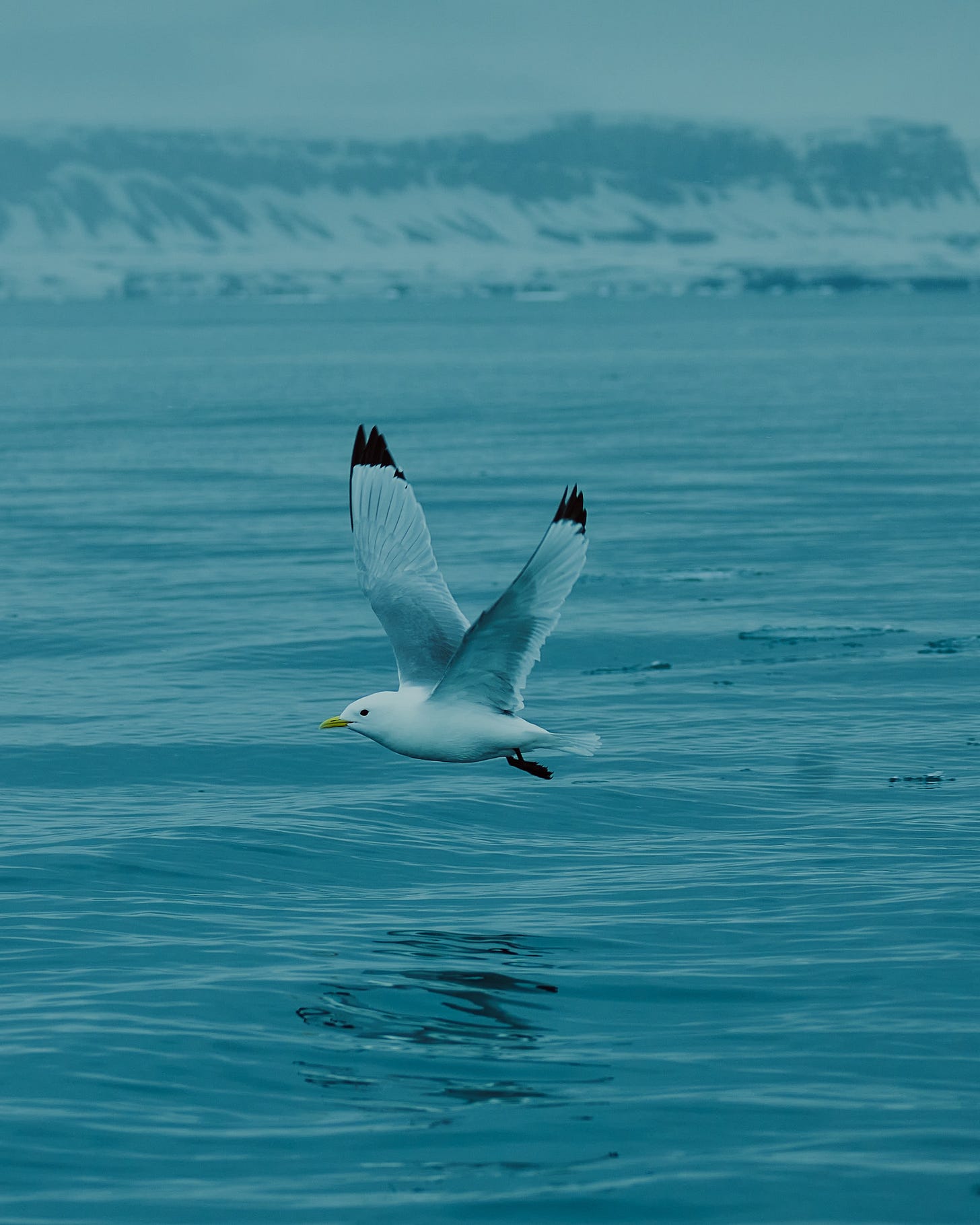Leica SL3 Long-Term Review
PLUS: Last call for our $200 Moment gift card contest!
The Leica SL3 was introduced earlier this year and it injected a lot of excitement across the SL ecosystem. Here came a new, flagship mirrorless camera from Leica that integrated some of the latest imaging technology with unique differentiators that only this brand could offer:
A full-frame 60MP BSI sensor with triple resolution technology
The new Maestro IV processor with Leica Looks and a revamped autofocus algorithm
And enhanced connectivity with a world-class iOS app
The Leica SL3 has been a long time coming but the amount of convergence it introduces is really impressive.
I was fortunate enough to use this camera all over the world, even in environments it’s never been tested in before. And in that time I’ve really come to appreciate how much work went into building a true successor to the SL2. I’ve also come to appreciate that this camera—while appealing to a wider market than the M system—is still speaking to a slim segment of the entire imaging space.
With that in mind, I’m gonna share what my experience was like using this camera for my work, how the experience can improve in the years to come, and who should truly consider this camera for their journey.
The Specifics
Any conversation around the Leica SL3 has to start with the images. This camera delivers a lot of dynamic range to explore in your post-production. Like a Division I recruit, the SL3 is a camera that easily slots into that upper tier of imaging solutions. Just about every premium camera can produce a 14-bit raw file but the range of information that can fit into that container is what makes this camera special.
I paired the Leica SL3 with the SL 100-400mm lens as the primary solution for my work in the Arctic. This environment was colder than a scorned ex-lover and just as unpredictable. The sun would never set but the conditions would keep changing. Some days you’d wake up to bright blue skies and deep dark seas. Other days were shades of bluish-greys that limited visibilities. And of course, a whole lot of white. I’ll admit, I had my reservations about bringing a new camera for such critical work but the SL3 over-delivered.
I would keep the ISO under 400 as much as possible to maximize the dynamic range within each file. The result were these rich files that gave me the freedom to push the colours without breaking down easily. Compound this with the fact that you have 60 megapixels of resolution to play with and you’re practically spoiled by the raw file.
Here’s the thing though, the files held up really even in higher ISO situations. Given that this sensor shares almost everything with the one on the Leica M11, I wouldn’t mind going as high as 2,500 for situations that demanded a really faster shutter speed. Even at this ISO, the grain was under control. In fact, I’d say you can go as high as 6,400 before grain starts to become a major issue. That being said, if you’re investing in this camera, you’re gonna want to keep that ISO as low and controlled as possible to capture the best ingredients you can.
The autofocus system has also seen a considerable upgrade, where it now feels like you can take full advantage of the mechanics inside a modern L-mount lens. Focusing is quicker, more reliable, and there’s a healthy suite of settings you can fine-tune to get the best performance for the work that you’re capturing. I’ll talk more about the performance later in the review but from a high-level, the autofocus of the Leica SL3 is a noticeably better than the one found in the previous model.
The menu system has also seen a monumental change. The user interface is much cleaner, where every icon has been reinvented for this generation of cameras. I love that you can tap and hold on the icons to quickly change the respective settings. The control centre has also been cleaned up, making for an easier way to manage important settings. And the entire menu system can be navigated by touch, which is just great to see. The menus weren’t something that I felt needed a visual upgrade but after using this camera for months, I hate going back to a camera that doesn’t have a system like this.
The overall shape of this camera has gotten small while the grip has gotten deeper and this may or may not speak to you. When I used the SL3 exclusively, I felt fine. In fact, I welcomed the smaller profile. Then I went to my SL2-S and thought, “Wait a minute do I like this chunkier size more?” Some people may feel more strongly than others. After months with the SL3 design and going back and forth, I feel like I enjoy the SL3 more.
This camera has also moved from a power switch to a power button. At first this bothered me, because I could no longer tell if the camera was on or off without looking at it. But this change does introduce some useful features that benefit my experience in the long-run. The most useful being the ability to put the camera to sleep—instead of turning it off—with just one tap.
The only true gripe I have with this button is a tiny one and it’s the icon. I just feel like it doesn’t need to be there. It might sound blasphemous to some designers but I genuinely feel like you could remove this power icon and users would be fine.
Moving on to another design change, we see a two-way tilting display similar to the one introduced with the Leica Q3. The protrusion here doesn’t feel as controversial when the Q3 was announced since the SL2 series of cameras had a slight bump to them to begin with. What I love about this design is that you have a tilting mechanism that caters to the person behind the camera. And in typical Leica fashion, you have something that feels durable while maintaining that IP54 weather sealing.
The move to CF express type B paired with UHS-II SD allows for expanded capture options, especially in video. You just have more bandwidth to send information as well as download that information back to your computer. This also comes at a time where CF express cards have considerably dropped in price, where they’re almost on par with premium SD card options.
I got to test this camera in wet and cold environments well below the -10 degree recommendation. I had zero issues. I would move this camera from the warmth of my suite, to frigid winds, to freezing seas, and back again in this vicious cycle of fluctuating temperature and humidity. After two weeks of this, the camera continued to work just fine. The SL cameras already had a reputation for being durable and it’s impressive to see how the SL3 has gotten smaller without compromising on this durability.
The L-mount alliance means that you have a ton of lens options for this camera from all kinds of manufacturers. However, if you’re seriously considering this camera, you’ll want to invest in premium SL glass. These are the best lenses coming out of Germany and can resolve sensors well beyond 100 megapixels. They also shatter any conventions you might hold about aperture and light-gathering in lenses.
It’s great that you can adapt M lenses and squeeze the most out of them. It’s great that you have creative options from other brands that Leica doesn’t currently produce. But if you really want to get the most out of the Leica SL3, you should invest in at least one really good SL lens.
Before I talk about how this camera could get better, let me talk about why you would choose the Leica SL3 over the Leica SL2. The simple answer for me is speed. The SL3 allows you to work much faster in the field. There’s no shortage of upgrades to this camera but it all culminates into a significantly faster experience from the predecessor. If you’re largely shooting in controlled environments, the SL2 may be more than enough for what you do. But if your environment is dynamic, or you’re dynamic in your approach, the Leica SL3 will truly improve your turnaround time.
I’ve also got to talk about the medium-format sized elephant in the room. I’ve gotten several questions about whether or not this camera replaces my medium format solutions. Well… it depends.
I pick up the best tool for the job. There are still instances where I’ll reach for my medium format camera because the environment is incredibly controlled and the difference is noticeable, where a 16-bit raw file with super accurate colours do improve the overall success of the project. But those moments feel much less common after spending time with this new Leica.
The Leica SL3 gets me so damn close to what the medium format produces and in many instances, the viewer just can’t tell the difference. It also does so in a much faster way where the cost of using a medium format solution feels too high for several environments. For me, I just found myself reaching for a medium format solution less and less the more I got comfortable with the Leica SL3.
This review would not have been possible without the help of Quark Expeditions. They are a polar adventure company that specialize in Arctic and Antarctic travel throughout the year. At first glance, I thought they were some relaxed, cruise company but I was wrong. They are in the business of delivering bucket list adventures and new challenges for all kinds of travellers.
I thought I wasn’t a cold-weather, landscape-shooting type of person but my trip Quark just shattered that belief. I had the adventure of a lifetime, created some of my best work, and genuinely learned new lessons about myself. If you’re looking for the voyage of a lifetime that you wanna add to your bucket list, visit Quark Expeditions and speak with an expert today.
How Can It Get Better?
Now that we’ve talked about what this camera excels at, let’s talk about how it can get better. And why not start that conversation with the internet’s favourite talking point on cameras: autofocus.
Like I mentioned earlier, there’s a massive upgrade to the autofocus on the SL3 compared to its predecessor. I found myself being able to lock focus quicker and more accurately than before. There are moments though where this system seems to get fooled. When using the wider zones or subject tracking, the continuous tracking can overshoot and miss the mark, primarily in video mode. It’s something that would simply surprise me at times. And that’s because it seemed to happen in ‘easier’ environments.
I could be on a moving zodiac with a telephoto lens and use the still-in-beta animal tracking to capture a perfectly sharp bird in flight. No problem! But I could also find myself sitting down to record a voice over in bright lighting and have this camera shift focus during the recording. Leica has a track record of releasing many updates over the lifecycle of a camera so I’d love to see the algorithm here get fine-tuned, especially for video work.
Leica is known for their incredible user interface design but one place that will need some more refinement is the video profiles menu. But I’m not gonna speak at length here because they’ve already indicated to me back in February that this will evolve over time. So yea, I’m excited to see where it goes in the months to come.
The battery life of this camera of this camera has gotten marginally better than the predecessor but I wanna believe that there’s room for more improvement here. Given all the new components in this camera, I think there’s still some efficiencies that can be done to improve overall battery performance. I could get through most of a day for photography, and the new press-to-sleep feature with the power button helps to extend your range. But when you pivot to a video-only environment, you’re gonna be changing batteries every 2 to 3 hours.
Leica had already published the white pages on how to best record with L-Log but I’d love to see a more robust document that expands on the best practices for video production with Leica cameras. With the SL3, it really feel like an inflection point for the ecosystem so it’d be great to have an additional document that covers more features—especially around ISO, metering, and formats—that can be maximized for video. It’s not easy but I think it’s valuable for the ecosystem if this gets done.
I’ll admit, this camera shouldn’t be considered a primary video tool. I would say that this is best geared for those that have a 80:20 slit between photo and video at most. Don’t get me wrong, you can capture some phenomenal shots with a lot of dynamic range. But rolling shutter you’ll encounter makes shots with movement very challenging. The Leica SL3 is a photo first solution that is capable of great video in select environments.
On the topic of video, I don’t know if all of this is even possible. In fact, some of them may actually be impossible. But I thought I’d just list the features I’d still love to see in a future firmware update:
False colour
USB SSD recording
Sharing the on-screen display via HDMI
Vector scopes
4K ProRes recording
Anamorphic de-squeeze options
Project timelines independent of frame rates
Open-gate recording (too processor intensive)
32-bit audio (likely not possible)
ARRI LogC3 license like we see on Lumix (wishful thinking)
Netflix certification (really tough)
This is a lot. Some I’ve mentioned in previous reviews. And some may not even be possible. But again, these are just items that I’d love to see added to the platform in the months and years to come.
With all that said, I would trade all these requests for something else and it’s something that I will refer to as Leica Professional Services. The SL system is really catering to professionals that want to do ambitious work while leveraging the colour, optics, and design philosophies of Leica. So I’d love to see a future in which there is a professional service that individuals can subscribe to for enhanced support. Similar to Canon, Nikon, and Sony, this is something that pros would pay into annually and in return, they can expect faster repairs, loaner cameras, discounts on out-of-warranty services, dedicated phone support, and global coverage.
This is not easy to do (you’re effectively creating a new company inside of an existing company). But I think the time has come to make it happen. I’ve seen no shortage of people online talking about how Leica isn’t used for professional work but this is commentary from the uneducated. When you’re an active Leica photographer, you quickly discover other professionals that rely on Leica products for the work that they do. There’s more of us popping up each day and I think it would be an incredible achievement for the brand if they could announce a professional services division aimed at enhancing the support for pro photographers.
The Market
Depending on how you define it, the Leica SL3 either has very little competitors or an army of them. When you prioritize the feel of this camera, the user interface, the optics, the app integration, and the durability, well, the only real competition is the previous version. I mean, there just aren’t any mirrorless solutions that can confidently tick all those boxes (if you feel that I’m wrong in my assessment, let me know in the comments below and we can continue this conversation).
If you change your definition of competitors to something that’s more quantitative and driven by specs, then the playing field really opens up. There’s a wide assortment of high resolution cameras with impressive autofocus and rich video features. It really comes down to what are the 2 or 3 key features that are critical to success in your genre. But here’s the twist, Leica isn’t looking to compete in these conversations.
Even with all the impressive specs that the SL3 carries, the priority for Leica is still on the intangibles that make the experience of photography truly unique:
The simplicity of the design
The unique rendering of the lenses
The durability of the housing
The speed of the iOS app
The Leica SL3 expands the market by positioning competitive imaging technology in an alternative user experience that caters to proficient, design-centric photographers.
And well, on that note, let’s just jump into who I believe would benefit most from a camera like this.
Final Thoughts
The Leica SL3 is a true evolution from its predecessor. From the sensor to the screen, just about every component has been upgraded for this modern interpretation of the mirrorless experience for Leica enthusiasts. Regarding the question of, “Have they done enough?” The short answer is yes. But let’s be honest, if you’re still reading this review, you’re not interested in the short answer.
As some of you may have noticed, the profile of Leica has grown considerably in the last three years. This also coincides with a lot of influencers in the camera space grasping for relevancy by expanding on the topics they regularly cover. Which is why, in case you haven’t noticed, there’s just more dudes talking about Leica online. The result of this influx in coverage is that you get a lot of chauvinism, poor research, hyperbole, and clickbait that vastly outnumbers the journalists and photographers that have been qualifying this brand for years. Which brings us back to the SL3…
There’s been no shortage of conversations around this camera and a lot of it sounds like forcing a camera-shaped peg through an insecurity-sized hole. Individuals see the specs, the price, the red badge, and suddenly an opportunity appears to inject some excitement in their life while creating fresh content for an oversaturated audience. Again, dudes are flocking to Leica to fill a gap in their life, be it real or imagined. The only problem I’m seeing is the gap isn’t one of technology. It’s a gap in understanding.
If you precisely know what you create, where you create, how often you create, and what the journey should feel like, you’ll know if the Leica SL3 is right for you. This camera is not for everyone. This is a camera that serves a narrow market by design. This isn’t for someone that’s lacking in creativity and constantly tickled by the latest features. It’s a camera that favours those that know the stories they wish to create and care a lot about how they get there.
When I think about those that would benefit most from the Leica SL3, I’m thinking about individuals that are incredibly intentional about their approach to photography, spend a lot of time obsessing about their colour work, spend more time thinking about lenses than sensors, find themselves on the move a lot, and importantly, constantly turning over new work. If those five statements describe you, then I think the Leica SL3 is a camera seriously worth considering.
LAST CALL: July Contest for a $200 Gift Card at Moment
Starting this month, I’ll be moving to gift cards for our monthly contests. While it was fun to pick a unique prize each month, I feel that having the freedom to pick your own prize is better. Each month, I’ll be giving away a $200 gift card to the Moment Shop where the winner can pick whatever speaks to them.
How am I picking the winner? All you have to do is be a free member of this community and leave a comment on this post. As with every contest, I’ll be randomly picking one person, confirming they meet the requirements and contacting them directly before announcing the winner publicly.
Once again, this contest is void where prohibited by law. Good luck!
My thanks to the team at Moment! Not only for this contest but for being the longest supporter of my work online. They’re a lean team of passionate creators that truly believe in supporting other creatives on their journey. Whether it’s a new camera, lens, workshop, or just some great articles, visit ShopMoment.com today.
Previous Favourites
What’s Next?
That’s enough for this week. See ya next time!
GB











I've now watched the video and read the blog post version of this review Gajan. It's nicely framed and free of "fan"fare. My only dilemma still lies in the choice. SL3 vs. SL3-S. I understand the specs and differences on paper and in practice, but I can't make a decision. In fact, I ordered the SL3 (which arrived Monday) and it's still sitting in the shipping box. Haven't even cracked it open. I think it's going to come down to some use in addition to belief that the AF algorithm will improve on the video side. That's really my only concern I think. I also question whether the 24MP image of the SL3-S would feel like enough given I'm so accustomed to my Q3 and Sony A1 II. Thanks again!
Great read!